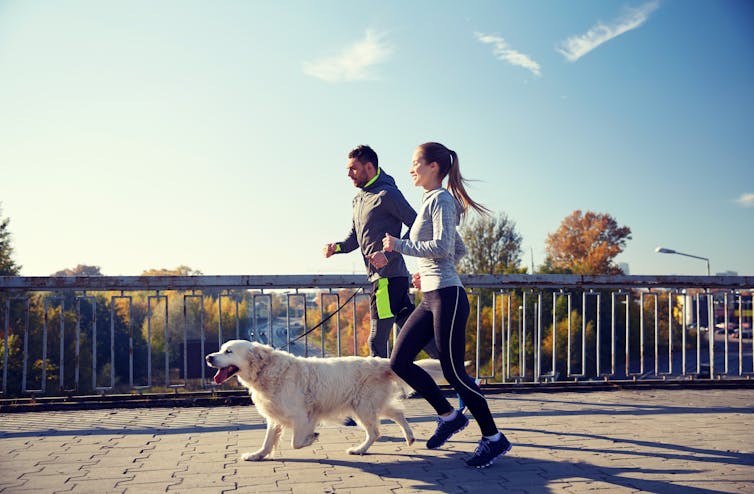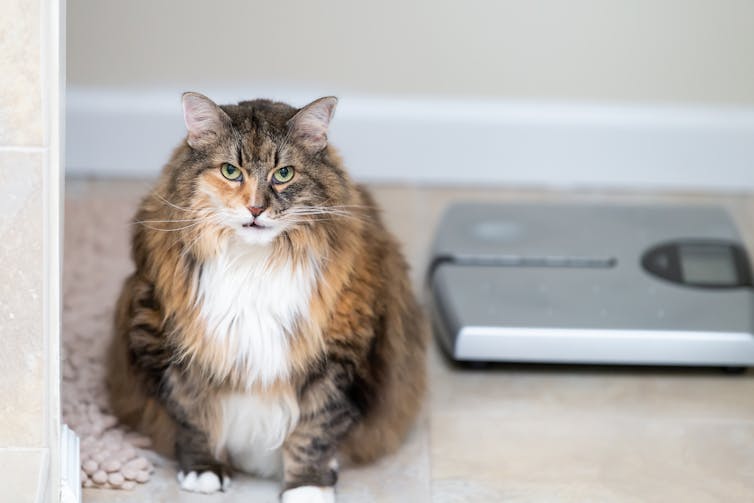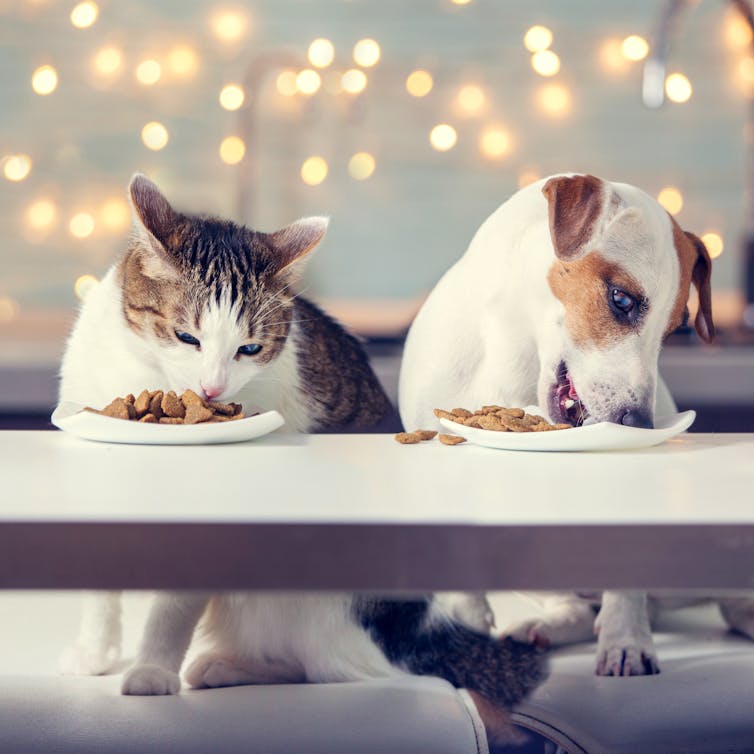
Do you love giving your cat or dog an extra treat to nibble on? As much as they seem to enjoy it, it isn’t always the healthiest move.
Just like humans, pets can suffer from weight issues. And it’s becoming a growing problem, with more chubby companion animals around than ever before. In a recent survey of veterinarians, 73% said that obesity was “one of the most prevalent conditions” they see, with as many as half of pet dogs and 44% of cats carrying excess bodyweight.
It’s a worrying trend. Although we can sometimes think that a chunky pet is cute, the reality is that even a little extra bodyweight can cause significant health issues for your pet – from diabetes to cardiorespiratory problems (such as trouble breathing when asleep) and even an increased chance of suffering from heatstroke.
Obesity – which is diagnosed when a pet is carrying 15%-20% more than their ideal bodyweight – is also associated with an increased incidence in conditions such as osteoarthritis and some forms of cancer.
It goes without saying that we all want our pets to live as long as possible. So here are some ways to keep your dog or cat in great shape.
1. Keep them active
Many dogs aren’t regularly exercised – sometimes because of poor weather, or perhaps because of behavioural concerns, such as anxiety when they encounter other dogs or people. And while outdoor cats generally keep themselves fit and active, indoor cats can have a level of body fat that is at least 5% higher than outdoor cats, and are far more prone to obesity.
Exercise is key to maintaining a healthy body weight, and to weight loss too. Try to exercise your dog at least once a day, and ideally more. Take care to ensure the length and type of exercise is appropriate for their age and ability, and increase any exercise slowly.
Read more: Five things to consider before getting a feline companion
Dogs love “scentwork” or “trick training” which can be done in your living room. And there are numerous cat toys to encourage your indoor feline companion to burn off some calories while engaging in play.
You could also make mealtimes more active by scatter feeding – where you scatter your dog’s food on the ground (after ensuring it’s clean and safe) – or puzzle feeders, which encourage your dog to work for food and treats.

Hydrotherapy, which involves getting your dog to swim or walk in a pool or water treadmill, can be a great option for gentle or non-weight-bearing exercise. This is especially true for older dogs or those recovering from injury.
Even cats can be trained to go for a walk on a lead. But if your feline friend simply won’t cooperate – or you don’t feel like braving the weather with your dog – you can try indoor or garden games to keep the activity levels up.
2. Watch their diet
Some pets simply enjoy their food so much that they can get a bit chubby whatever their age. Or, just like people, “middle age spread” can occur in pets who may naturally slow down as they get older.
Either way, their diet may need to change to maintain a healthy bodyweight. Weight loss should be a gradual process, so always use recommended feeding guidelines on food packaging – or online calorie calculators – as a starting point for how much to feed your pet.
Try to keep a food diary every day. And, don’t forget to weigh out your pet’s food accurately using a scale. Scoops are hugely inaccurate and make overfeeding much more likely.

If their weight is far too high – or even approaching obese proportions – it may be best to begin your pet’s weight-loss journey with a trip to the vet for a full health check and body condition assessment. They will also be able to provide a target bodyweight and timeframe for weight loss.
3. Be aware of other risks
Sometimes it’s just in the genes. Some Labrador retrievers, for example, have a genetic mutation that predisposes them to increased “foodie” behaviour and weight gain. And neutered pets can have reduced daily calorie needs, so if their diet isn’t altered accordingly they can inadvertently gain weight.

So it’s important to recognise what a healthy bodyweight and shape is for your cat or dog – and the factors that could affect it. Do trust vets and other professionals, to make it easier for them to have potentially senstitive conversations with you about how best to help your pet lose weight.
4. Ditch high-calorie treats
High-fat food and treats provide lots of calories in small amounts, so it can be easy to overfeed your pet without realising. And fattening “human” food, such as leftovers, can also contribute to them piling on the pounds, alongside an increased risk of pancreatitis – and potentially even worse if toxic foods, including onions and some artificial sweeteners are ingested.
But managing your pet’s weight doesn’t mean you can’t treat them. Take a trip to your local pet shop to look for healthy low-calorie alternatives.
Read more: How to train your dog in basic 'life' skills - and why it's important
Or take a look in your fridge. Many dogs love carrot or cucumber, especially when chopped up as a training treat. Cats love a bit of tuna or chicken, both of which are high in protein but low in calories.
Don’t forget to look at other ways of treating your pet too – exercise, play and simply spending time with them will benefit both animal and human alike.
All of the tips do require a little effort. But keeping your pet’s body lean and healthy will help to prolong their life. And who among us doesn’t want longer with our beloved pets?
Jacqueline Boyd is affiliated with The Kennel Club (UK) through membership, as Chair of the Activities Health and Welfare Subgroup, member of the Dog Health Group and Chair of the Heelwork to Music Working Party. Jacqueline also writes, consults and coaches on canine matters on an independent basis, in addition to her academic role.
Anne Carter does not work for, consult, own shares in or receive funding from any company or organisation that would benefit from this article, and has disclosed no relevant affiliations beyond their academic appointment.
This article was originally published on The Conversation. Read the original article.







